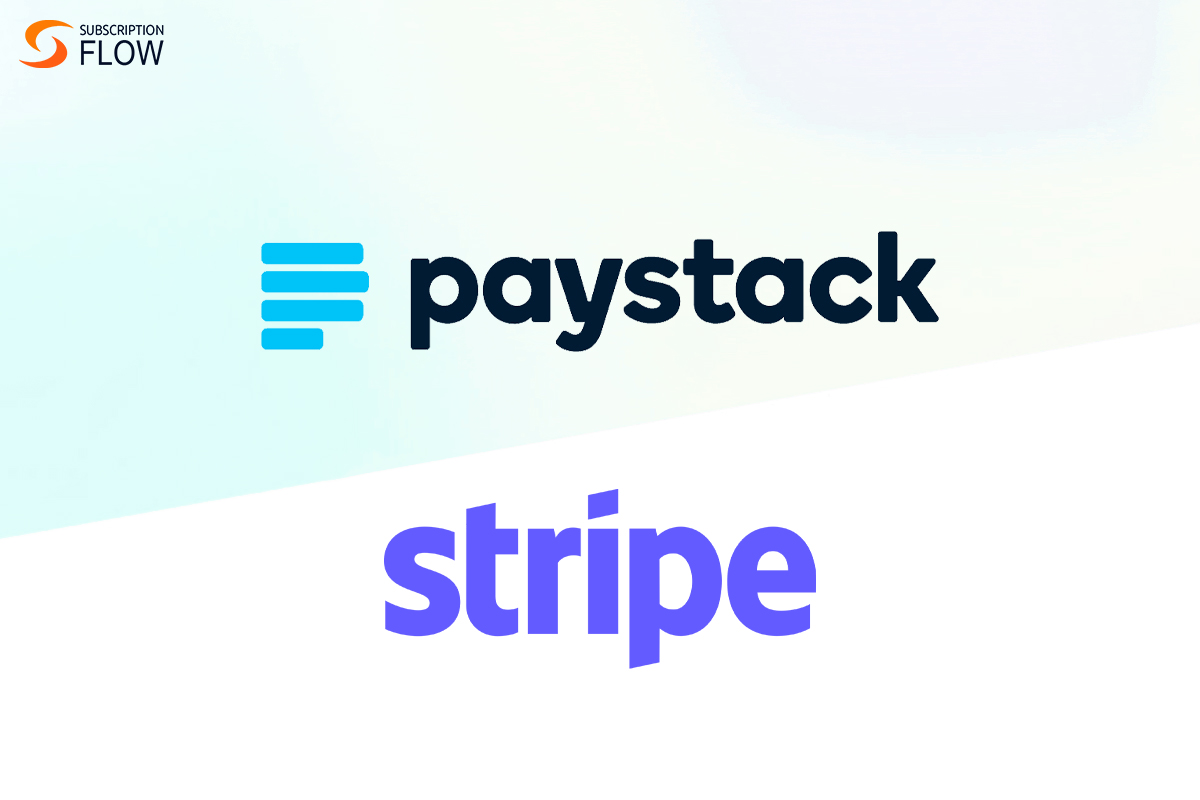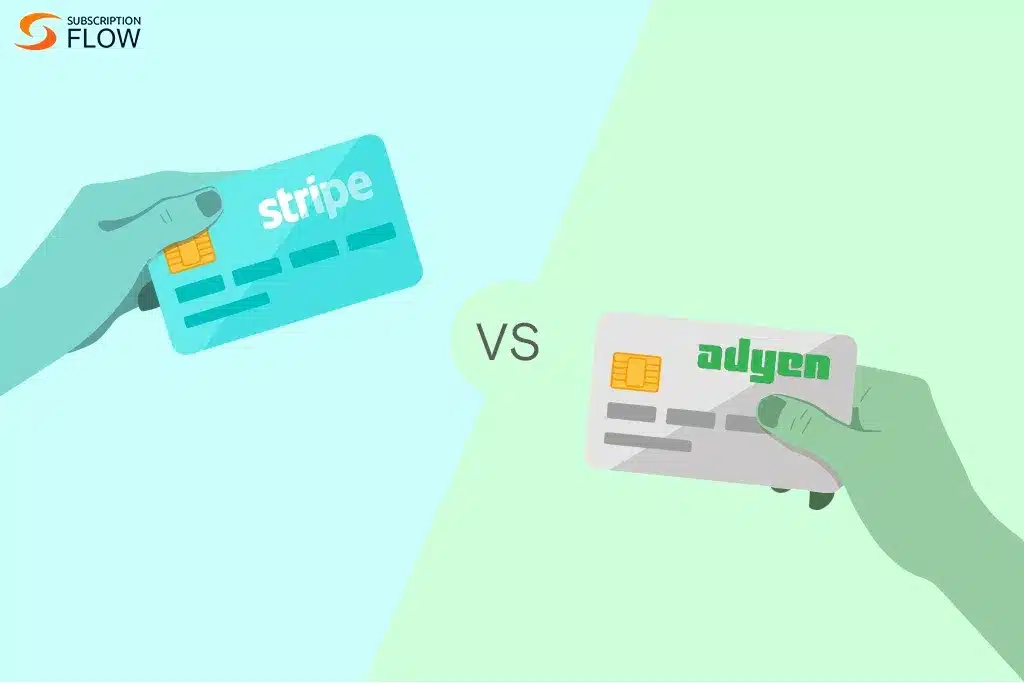
Payments Face-off: Paystack vs Stripe 2023
Are you looking for an easy way to get paid online in 2023? Do you wish to orchestrate secure, hassle-free, and frictionless payment processing for your customers? Are you considering Paystack vs Stripe to power your payments?
You’ve come to the right place.
Finding the right payment gateway to integrate with is crucial to subscription business success as it has a direct impact on your revenue generation capabilities, the quality of the customer subscription journey, and tipping the churn and customer retention KPIs in your favour.
In this blog, we deep dive into Paystack vs Stripe comparison in 2023 so you can assess which of the two is better suited to serve your business’s unique payment needs. We’ll cross-examine market share, features, pricing, and customer support to get a holistic view of both platforms.
Paystack vs Stripe: Introduction
Stripe: A Quick Look
Stripe is a fintech giant and leading global payment processing platform that enables businesses to power online payments. Established in 2010, Stripe has gained widespread popularity across markets for its comprehensive suite of tools designed to simplify payment processing.
With Stripe, businesses can seamlessly accept payments from customers using credit and debit cards, digital wallets, and many other popular payment methods. With an emphasis on user experience, developer-friendly APIs, and advanced security measures, Stripe has emerged as a trusted and widely adopted payment solution for businesses of all sizes around the world.
Paystack: A Quick Look
Paystack is a Nigerian payment processing platform enabling businesses to accept secure and convenient online payments from customers. Paystack was founded in 2015 and acquired by Stripe in 2020. It enjoys prominence in the African market, particularly in Nigeria, with its wide range of features that facilitate seamless transactions. Whether it’s accepting payments through cards, bank transfers, or mobile money, Paystack empowers businesses to enhance their revenue generation capabilities.
Paystack vs Stripe Comparison 2023: Features
Let’s compare and contrast the different features of Stripe vs Paystack.
Supported Payment Methods
Both Paystack and Stripe support various payment methods for your customers to utilize, including card payments and bank transfers.
- Paystack supports:
- Cards (Visa, Mastercard, Verve)
- Bank transfers
- QR code payments
- USSD payments
- Stripe supports:
- Cards payments (Visa, Mastercard, American Express, Discover, Diners Club, JCB, UnionPay)
- Digital wallets (Apple Pay, Google Pay, etc.)
- Region-specific payment methods e.g., iDEAL (the Netherlands), Alipay (China), SEPA direct debit (Europe), etc.
- Bank transfer (ACH credit transfers, Bacs Direct Debit, SEPA Credit Transfers, etc.)
- Buy Now, Pay Later (Klarna, AfterPay)
- Others: Multibanco (Portugal), OXXO (Mexico, WeChat Pay etc.
As is evident, Stripe has a more extensive global reach, supporting a wide range of card networks and alternative payment options like Apple Pay and Google Pay. Paystack primarily focuses on the Nigerian market by supporting local payment methods such as bank transfers and mobile money which are highly popular payment options in the African market.
Integration Options
Stripe offers a wide range of integration options to seamlessly incorporate its payment gateway services into various platforms, websites, and applications. The integration process with Stripe involves:
- API Integration: Stripe provides robust APIs (Application Programming Interfaces) that allow developers to integrate Stripe’s functionality directly into their applications.
- Plugins and Extensions: Stripe offers pre-built plugins and extensions for popular e-commerce platforms such as WooCommerce, Shopify, Magento, etc. These plugins allow businesses to easily set up Stripe as their payment gateway within their existing e-commerce infrastructure.
- Custom Integration: For more advanced integration needs, Stripe provides extensive documentation, code samples, and client libraries in multiple programming languages. This enables developers to build custom integrations tailored to their specific requirements.
Paystack also offers multiple integration options to allow businesses to power payments from their existing platforms and websites. Here’s an overview of the integration process with Paystack:
- Payment Links: Paystack allows businesses to generate payment links that can be shared with customers via various channels such as email, SMS, or social media. Customers can click on these links and securely make payments using their preferred payment methods.
- Checkout Integration: Paystack provides a customizable checkout form that businesses can embed on their websites or web applications. This allows customers to make payments directly on the business’s platform, providing a seamless and branded payment experience.
- API Integration: Similar to Stripe, Paystack offers APIs that enable developers to integrate Paystack’s functionality directly into their applications.
- Plugins and Libraries: Paystack provides plugins and libraries for popular content management systems (CMSs) and frameworks such as WordPress. These plugins allow businesses to quickly integrate Paystack into their CMS or framework-based websites.
Overall, Stripe has a larger ecosystem of integrations, offering greater flexibility to businesses in connecting with preferred tools and services. Paystack, although more focused on the Nigerian market, also provides integrations with many global platforms.
Developer-Friendly
Stripe is well-known for its developer-friendly APIs, providing extensive documentation and robust tools for custom integrations and enhanced control over payment processes. Paystack also offers APIs, albeit with a slightly more limited set of features and documentation.
International Payments
Stripe has a strong advantage in terms of international payments, supporting multi-currency transactions and allowing businesses to accept payments from customers worldwide. Paystack primarily focuses on facilitating payments within Nigeria but has been expanding its international payment capabilities.
Fraud Prevention
Both Paystack and Stripe prioritize security and provide built-in fraud prevention tools to protect businesses and customers. They implement various measures such as advanced fraud detection algorithms, 3D Secure authentication, and secure tokenization to mitigate fraudulent transactions.
Customer Support
Stripe offers extensive documentation, developer resources, and a dedicated support team to assist businesses in implementing and troubleshooting their payment gateway services. Paystack also provides documentation and support channels, but it may have a more localized focus.
Paystack vs Stripe Comparison 2023: Pricing
Both platforms only charge for every successful transaction. There are no monthly, setup or hidden fees.
Paystack
- Paystack charges 1.5% + NGN 100 for local transactions
- Paystack charges 3.9% + NGN 100 for international transactions
NGN 100 is waived for transactions under NGN 2500 and local transactions are capped at NGN 2000. Fees also vary depending on payment method type.
Stripe
- Stripe charges 2.9% + 30 cents per card and wallet transaction which is an industry-standard
- Fees for alternative payment methods start at 80 cents (iDEAL)
- Stripe also offers custom pricing
Conclusion
In conclusion, when it comes to a comparison of Paystack and Stripe, both payment providers offer robust payment solutions.
Stripe with its extensive reach, developer-friendly APIs, and support for various payment methods including cards, digital wallets, and region-specific options, offers businesses a wide range of capabilities and integration possibilities.
On the other hand, Paystack excels in the African market. It enables businesses to accept secure payments through cards, bank transfers, QR codes, and USSD payments. While Paystack’s focus is primarily on the Nigerian market, it provides integration options such as payment links, checkout forms, APIs, and plugins for content management systems.
Ultimately, the choice between Paystack and Stripe depends on the specific needs of your business, target market, and integration requirements. Assessing factors such as supported payment methods, integration options, developer-friendliness, international capabilities, and customer support will help you make an informed decision.
SubscriptionFlow’s robust subscription management software offers growing businesses the opportunity to integrate with either platform to power frictionless payments and streamline subscriptions. Schedule a demo to learn more about how we can help your business unlock its true revenue growth potential.










